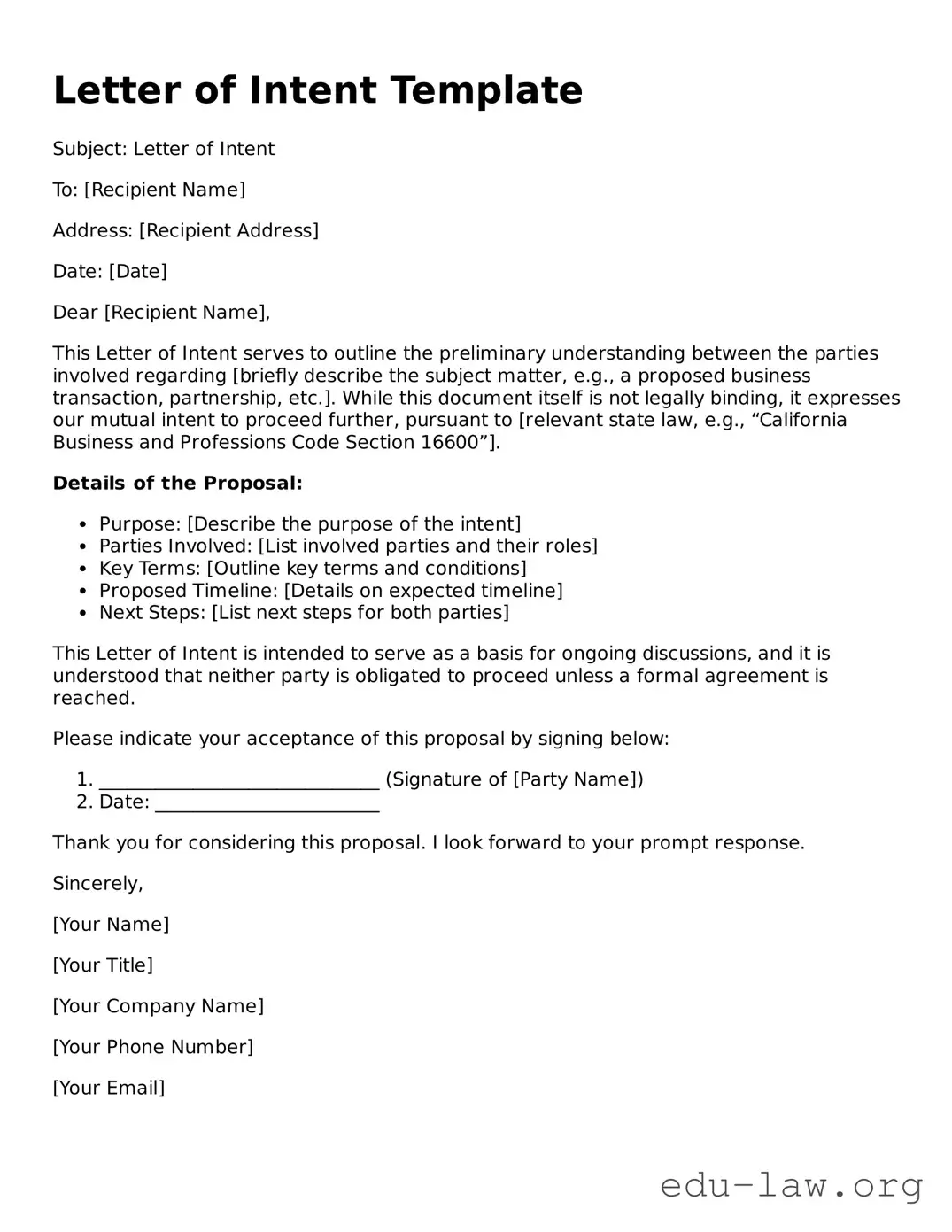What is a Letter of Intent (LOI)?
A Letter of Intent is a preliminary document that outlines the intention of parties to enter into a formal agreement. It serves as a roadmap for negotiations and can specify the terms and conditions that the parties are considering. While an LOI is generally non-binding, it may include sections that could create enforceable obligations, such as confidentiality clauses.
Why is a Letter of Intent important?
The Letter of Intent is important because it sets the stage for future negotiations. It helps clarify the key terms that the parties are willing to discuss, reducing misunderstandings down the line. Furthermore, an LOI can demonstrate commitment to the transaction, enhancing trust between the parties.
What should be included in a Letter of Intent?
A typical LOI should include the names of the parties involved, a clear statement of purpose, key terms of the anticipated agreement, and any specific conditions that must be met. It may also contain timelines, confidentiality agreements, and non-binding clauses to protect both parties' interests during the negotiation process.
Is a Letter of Intent legally binding?
In general, a Letter of Intent is not legally binding. However, certain provisions within an LOI can be binding if they are explicitly stated as such. These can include confidentiality obligations or exclusivity agreements. It is crucial for parties to explicitly state which parts of the LOI are intended to be binding and which are not.
Can I change the terms of a Letter of Intent once it is signed?
Yes, a Letter of Intent can be modified after it is signed, provided all parties agree to the changes. It is advisable to document any amendments in writing to ensure clarity and avoid disputes. Open communication between all parties will facilitate this process.
What are the potential drawbacks of using a Letter of Intent?
One potential drawback is that an LOI may create an impression of commitment that is not fully intended if the document is not carefully drafted. Additionally, if certain provisions are deemed binding, parties may unintentionally create legal obligations. Therefore, clarity in writing and understanding every clause is essential.
How does a Letter of Intent differ from a contract?
A Letter of Intent is generally an informal outline of intent and prospective terms, whereas a contract is a formal, legally enforceable agreement that includes obligations and specific terms. An LOI serves as a tool to facilitate negotiations, while a contract finalizes the agreement reached by the parties.
